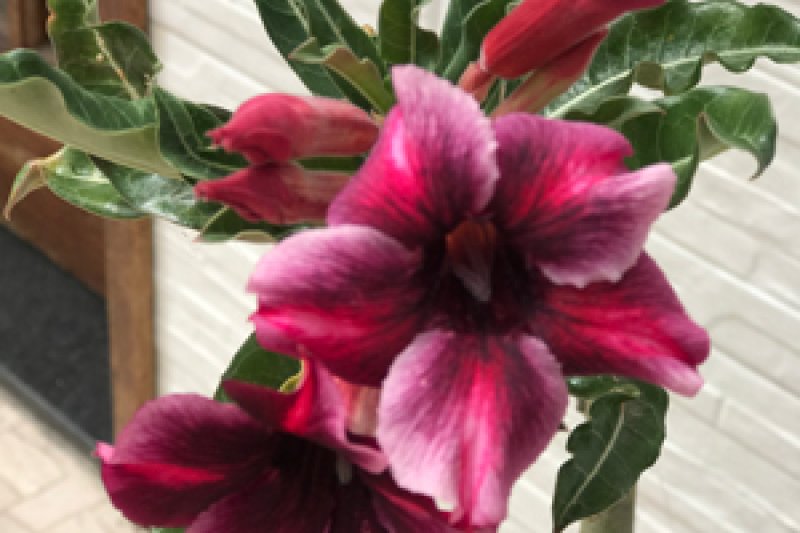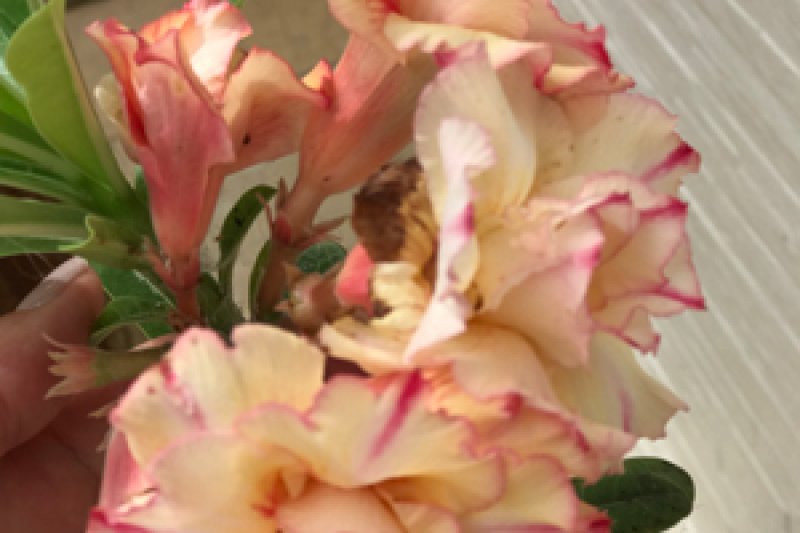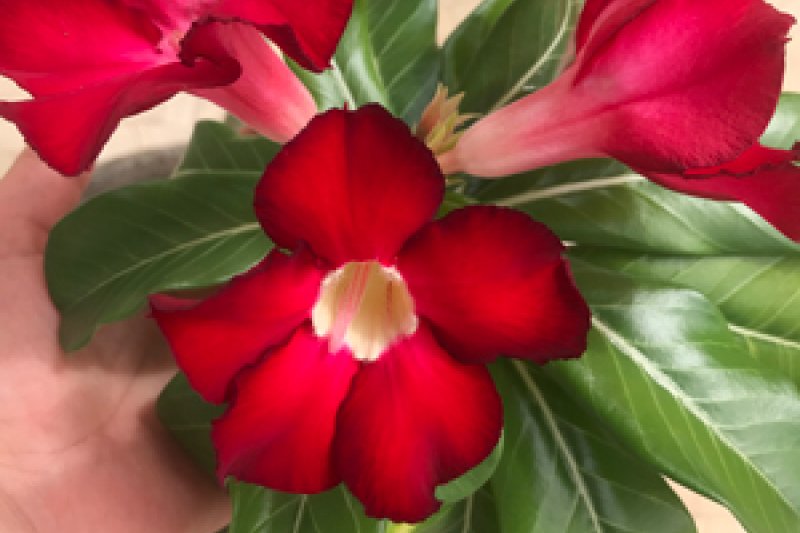The desert rose is native to the North African and Arabian peninsula arid regions. Hence why it goes by several names: Moroccan oleander, Algerian Iris, Egyptian jasmine, or even Arabian tulip. It is a type of succulent that stores water in the swollen part of its roots and stems. The desert rose usually blooms from April to July and its blossoms can be white, purple, and several colors in between, depending on the breeding. This plant is really low-maintenance and requires little attention. It needs warmth and sun exposure: at least, 8 daily hours. Drainage is also vital for its well-being. Make sure to avoid over-watering it, as it prefers drier soil. You can add some fertilizer between March and October to support the healthy growth of the roots. Pruning is not really indispensable as this plant usually grows slowly. If your plant is not flowering, it probably did not have a normal dormancy in winter. If the colder months' temperatures are below 15 degrees, the desert rose will suffer.
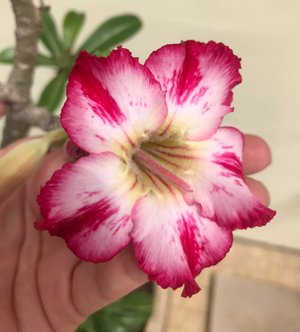
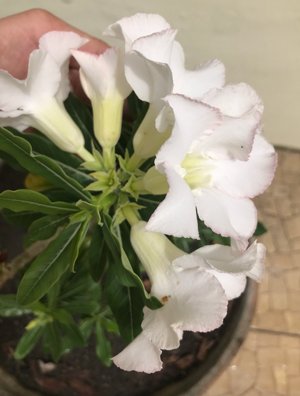
Also known as Adenium, the desert rose was first found in Aden. In China, it is considered to be a flower of wealth. In India, people think of it as a good luck token. Its thick stem indicates fertility, abundance, and good fortune. For many, it represents hope and persistence. The white flower illustrates purity and death for some. A new breed has been recently created and its blossoms are black. What could be their significance? Beware, the milky sap of the desert rose is in fact poisonous. Wear gloves to prevent it from coming in contact with your skin as it can cause irritation. But in some countries, it is used as an endemic medicinal plant with antiviral, antimicrobial, and anticancer properties. Some treat joint pains, ulcers, and skin diseases with a root extract of the desert rose. Others use desert rose crystals in their meditation and claim it helps them be grounded, feel calm, and be lucid in times of transition.
The Desert Rose is quite a valuable plant, right?
Happy gardening 🌱🌱
